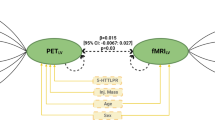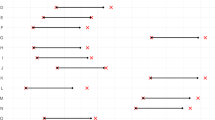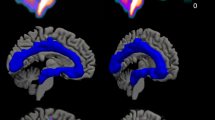Abstract
Serotonergic dysfunction is implicated in major depressive disorder (MDD), but the mechanisms of this relationship remain elusive. Serotonin 1A (5-HT1A) autoreceptors regulate brain-wide serotonin neuron firing and are positioned to assert large-scale effects on negative emotion. Here we investigated the relationship between raphe 5-HT1A binding and brain-wide network dynamics of negative emotion. 22 healthy-volunteers (HV) and 27 medication-free participants with MDD underwent positron emission tomography (PET) using [11C]CUMI-101 (CUMI) to quantify 5-HT1A binding in midbrain raphe nuclei and functional magnetic resonance imaging (fMRI) scanning during emotionally negative picture viewing. Causal connectivity across regions responsive to negative emotion was estimated in the fMRI data using a multivariate dynamical systems model. During negative picture viewing, MDD subjects demonstrated significant hippocampal inhibition of amygdala, basal-ganglia, thalamus, orbital frontal cortex, inferior frontal gyrus and dorsomedial prefrontal cortex (IFG, dmPFC). MDD-related connectivity was not associated with raphe 5-HT1A binding. However, greater hippocampal inhibition of amygdala, thalamus, IFG and dmPFC correlated with hippocampal 5-HT1A binding. Correlation between hippocampal 5-HT1A binding and the hippocampal inhibition network was specific to MDD but not HV. MDD and HV groups also differed with respect to the correlation between raphe and hippocampal 5-HT1A binding which was more pronounced in HV. These findings suggest that increased hippocampal network inhibition in MDD is linked to hippocampal serotonergic dysfunction which may in turn arise from disrupted linkage in raphe to hippocampus serotonergic circuitry.
This is a preview of subscription content, access via your institution
Access options
Subscribe to this journal
Receive 12 print issues and online access
$259.00 per year
only $21.58 per issue
Buy this article
- Purchase on Springer Link
- Instant access to full article PDF
Prices may be subject to local taxes which are calculated during checkout



Similar content being viewed by others
References
Maier SF, Watkins LR. Stressor controllability and learned helplessness: the roles of the dorsal raphe nucleus, serotonin, and corticotropin-releasing factor. Neurosci Biobehav Rev. 2005;29:829–41.
Ferres-Coy A, Santana N, Castane A, Cortes R, Carmona MC, Toth M, et al. Acute 5-HT(1)A autoreceptor knockdown increases antidepressant responses and serotonin release in stressful conditions. Psychopharmacol (Berl). 2013;225:61–74.
Holmes A, Murphy DL, Crawley JN. Abnormal behavioral phenotypes of serotonin transporter knockout mice: parallels with human anxiety and depression. Biol Psychiatry. 2003;54:953–9.
Savitz J, Lucki I, Drevets WC. 5-HT(1A) receptor function in major depressive disorder. Prog Neurobiol. 2009;88:17–31.
Maier SF, Grahn RE, Kalman BA, Sutton LC, Wiertelak EP, Watkins LR. The role of the amygdala and dorsal raphe nucleus in mediating the behavioral consequences of inescapable shock. Behav Neurosci. 1993;107:377–88.
Will MJ, Der-Avakian A, Bland ST, Grahn RE, Hammack SE, Sparks PD, et al. Electrolytic lesions and pharmacological inhibition of the dorsal raphe nucleus prevent stressor potentiation of morphine conditioned place preference in rats. Psychopharmacol (Berl). 2004;171:191–8.
Maier SF, Grahn RE, Watkins LR. 8-OH-DPAT microinjected in the region of the dorsal raphe nucleus blocks and reverses the enhancement of fear conditioning and interference with escape produced by exposure to inescapable shock. Behav Neurosci. 1995;109:404–12.
Maier SF, Kalman BA, Grahn RE. Chlordiazepoxide microinjected into the region of the dorsal raphe nucleus eliminates the interference with escape responding produced by inescapable shock whether administered before inescapable shock or escape testing. Behav Neurosci. 1994;108:121–30.
Ramboz S, Oosting R, Amara DA, Kung HF, Blier P, Mendelsohn M, et al. Serotonin receptor 1A knockout: an animal model of anxiety-related disorder. Proc Natl Acad Sci USA. 1998;95:14476–81.
Heisler LK, Chu HM, Brennan TJ, Danao JA, Bajwa P, Parsons LH, et al. Elevated anxiety and antidepressant-like responses in serotonin 5-HT1A receptor mutant mice. Proc Natl Acad Sci USA. 1998;95:15049–54.
Parks CL, Robinson PS, Sibille E, Shenk T, Toth M. Increased anxiety of mice lacking the serotonin1A receptor. Proc Natl Acad Sci USA. 1998;95:10734–9.
Milak MS, DeLorenzo C, Zanderigo F, Prabhakaran J, Kumar JS, Majo VJ, et al. In vivo quantification of human serotonin 1A receptor using 11C-CUMI-101, an agonist PET radiotracer. J Nucl Med. 2010;51:1892–1900.
Parsey RV, Oquendo MA, Ogden RT, Olvet DM, Simpson N, Huang YY. et al. Altered serotonin 1A binding in major depression: a [carbonyl-C-11]WAY100635 positron emission tomography study. Biol Psychiatry. 2006;59:13.
Lemonde S, Turecki G, Bakish D, Du L, Hrdina PD, Bown CD, et al. Impaired repression at a 5-hydroxytryptamine 1A receptor gene polymorphism associated with major depression and suicide. J Neurosci. 2003;23:8788–99.
Krishnan V, Nestler EJ. The molecular neurobiology of depression. Nature. 2008;455:894–902.
Sargent PA, Kjaer KH, Bench CJ, Rabiner EA, Messa C, Meyer J, et al. Brain serotonin1A receptor binding measured by positron emission tomography with [11C]WAY-100635: effects of depression and antidepressant treatment. Arch Gen Psychiatry. 2000;57:174–80.
Drevets WC, Thase ME, Moses-Kolko EL, Price J, Frank E, Kupfer DJ, et al. Serotonin-1A receptor imaging in recurrent depression: replication and literature review. Nucl Med Biol. 2007;34:865–77.
Parsey RV, Ogden RT, Miller JM, Tin A, Hesselgrave N, Goldstein E, et al. Higher serotonin 1A binding in a second major depression cohort: modeling and reference region considerations. Biol Psychiatry. 2010;68:170–8.
Fisher PM, Meltzer CC, Ziolko SK, Price JC, Moses-Kolko EL, Berga SL, et al. Capacity for 5-HT1A-mediated autoregulation predicts amygdala reactivity. Nat Neurosci. 2006;9:1362–3.
Selvaraj S, Mouchlianitis E, Faulkner P, Turkheimer F, Cowen PJ, Roiser JP, et al. Presynaptic serotoninergic regulation of emotional processing: a multimodal brain imaging study. Biol Psychiatry. 2015;78:563–71.
Kranz GS, Hahn A, Kraus C, Spies M, Pichler V, Jungwirth J, et al. Probing the association between serotonin-1A autoreceptor binding and amygdala reactivity in healthy volunteers. Neuroimage. 2018;171:1–5.
Etkin A, Egner T, Kalisch R. Emotional processing in anterior cingulate and medial prefrontal cortex. Trends Cogn Sci. 2011;15:85–93.
Waselus M, Valentino RJ, Van Bockstaele EJ. Collateralized dorsal raphe nucleus projections: a mechanism for the integration of diverse functions during stress. J Chem Neuroanat. 2011;41:266–80.
Ryali S, Supekar K, Chen T, Menon V. Multivariate dynamical systems models for estimating causal interactions in fMRI. NeuroImage. 2011;54:807–23.
Passingham RE, Stephan KE, Kotter R. The anatomical basis of functional localization in the cortex. Nat Rev Neurosci. 2002;3:606–16.
Felleman DJ, Van Essen DC. Distributed hierarchical processing in the primate cerebral cortex. Cereb cortex. 1991;1:1–47.
Fuster JM. The prefrontal cortex-an update: time is of the essence. Neuron. 2001;30:319–33.
Goldman-Rakic PS. Topography of cognition: parallel distributed networks in primate association cortex. Annu Rev Neurosci. 1988;11:137–56.
Yeo BT, Krienen FM, Sepulcre J, Sabuncu MR, Lashkari D, Hollinshead M, et al. The organization of the human cerebral cortex estimated by intrinsic functional connectivity. J Neurophysiol. 2011;106:1125–65.
Fuster JM, Bressler SL. Cognit activation: a mechanism enabling temporal integration in working memory. Trends Cogn Sci. 2012;16:207–18.
Fuster JM. The cognit: a network model of cortical representation. Int J Psychophysiol. 2006;60:125–32.
Friston KJ. Functional and effective connectivity: a review. Brain Connect. 2011;1:13–36.
Summerfield C, Egner T, Greene M, Koechlin E, Mangels J, Hirsch J. Predictive codes for forthcoming perception in the frontal cortex. Science. 2006;314:1311–4.
Tu T, Schneck N, Muraskin J, Sajda P. Network configurations in the human brain reflect choice bias during rapid face processing. J Neurosci: Off J Soc Neurosci. 2017;37:12226–37.
First M, Spitzer R, Gibbon M, Williams J. Structured clinical interview for DSM-IV Axis I disorders (SCID-I/P, version 2.0) New York: Biometrics Research Dept., New York State Psychiatric Institute; 1995.
Hamilton M. A rating scale for depression. J Neurol Neurosurg Psych. 1960;23:56–62.
Metts AV, Rubin-Falcone H, Ogden RT, Lin X, Wilner DE, Burke AK, et al. Antidepressant medication exposure and 5-HT1A autoreceptor binding in major depressive disorder. Synapse. 2019;73:e22089.
Lang PJBM, Cuthbert BN. International Affective Picture System (IAPS): affective ratings of pictures and instruction manual. Technical Report A-8. Gainseville, FL: University of Florida; 2008. p 2008.
Zimmerman M, Martinez JH, Young D, Chelminski I, Dalrymple K. Severity classification on the Hamilton Depression Rating Scale. J Affect Disord. 2013;150:384–8.
Makris N, Goldstein JM, Kennedy D, Hodge SM, Caviness VS, Faraone SV, et al. Decreased volume of left and total anterior insular lobule in schizophrenia. Schizophr Res. 2006;83:155–71.
Segal M. Physiological and pharmacological evidence for a serotonergic projection to the hippocampus. Brain Res. 1975;94:115–31.
Jabeen Haleem D. Raphe-Hippocampal Serotonin Neurotransmission In The Sex Related Differences of Adaptation to Stress: Focus on Serotonin-1A Receptor. Curr Neuropharmacol. 2011;9:512–21.
Kocsis B, Varga V, Dahan L, Sik A. Serotonergic neuron diversity: identification of raphe neurons with discharges time-locked to the hippocampal theta rhythm. Proc Natl Acad Sci USA. 2006;103:1059–64.
Paul ED, Lowry CA. Functional topography of serotonergic systems supports the Deakin/Graeff hypothesis of anxiety and affective disorders. J Psychopharmacol. 2013;27:1090–106.
Godsil BP, Kiss JP, Spedding M, Jay TM. The hippocampal-prefrontal pathway: the weak link in psychiatric disorders? Eur Neuropsychopharmacol. 2013;23:1165–81.
Jin J, Maren S. Prefrontal-hippocampal interactions in memory and emotion. Front Syst Neurosci. 2015;9:170.
Lambert HK, Sheridan MA, Sambrook KA, Rosen ML, Askren MK, McLaughlin KA. Hippocampal contribution to context encoding across development is disrupted following early-life adversity. J Neurosci. 2017;37:1925–34.
Schneider M, Walter H, Moessnang C, Schafer A, Erk S, Mohnke S, et al. Altered DLPFC-hippocampus connectivity during working memory: independent replication and disorder specificity of a putative genetic risk phenotype for schizophrenia. Schizophr Bull. 2017;43:1114–22.
Meyer-Lindenberg AS, Olsen RK, Kohn PD, Brown T, Egan MF, Weinberger DR, et al. Regionally specific disturbance of dorsolateral prefrontal-hippocampal functional connectivity in schizophrenia. Arch Gen psychiatry. 2005;62:379–86.
Lee SW, Choi J, Lee JS, Yoo JH, Kim KW, Kim D, et al. Altered function of ventrolateral prefrontal cortex in adolescents with peer verbal abuse history. Psychiatry Investig. 2017;14:441–51.
Benoit RG, Anderson MC. Opposing mechanisms support the voluntary forgetting of unwanted memories. Neuron. 2012;76:450–60.
Anderson MC, Bunce JG, Barbas H. Prefrontal-hippocampal pathways underlying inhibitory control over memory. Neurobiol Learn Mem. 2016;134 Pt A:145–61.
Yasuno F, Suhara T, Nakayama T, Ichimiya T, Okubo Y, Takano A, et al. Inhibitory effect of hippocampal 5-HT1A receptors on human explicit memory. Am J Psychiatry. 2003;160:334–40.
Ogren SO, Eriksson TM, Elvander-Tottie E, D’Addario C, Ekstrom JC, Svenningsson P, et al. The role of 5-HT(1A) receptors in learning and memory. Behav Brain Res. 2008;195:54–77.
Gotlib IH, Joormann J. Cognition and depression: current status and future directions. Annu Rev Clin Psychol. 2010;6:285–312.
Author information
Authors and Affiliations
Corresponding author
Ethics declarations
Conflict of interest
JJM receives royalties for commercial use of the C-SSRS from the Research Foundation for Mental Hygiene and has stock options in Qualitas Health, a start- up developing a PUFA supplement. PS is the majority owner and Chairman of the Board of Neuromatters LLC, a brain computer interface neuromarketing and gaming company. MAO receives royalties for the commercial use of the Columbia-Suicide Severity Rating Scale. Her family owns stock in Bristol Myers Squibb. The remaining authors have no conflicts of interests to declare.
Additional information
Publisher’s note Springer Nature remains neutral with regard to jurisdictional claims in published maps and institutional affiliations.
Supplementary information
Rights and permissions
About this article
Cite this article
Schneck, N., Tu, T., Falcone, H.R. et al. Large-scale network dynamics in neural response to emotionally negative stimuli linked to serotonin 1A binding in major depressive disorder. Mol Psychiatry 26, 2393–2401 (2021). https://doi.org/10.1038/s41380-020-0733-5
Received:
Revised:
Accepted:
Published:
Issue Date:
DOI: https://doi.org/10.1038/s41380-020-0733-5
This article is cited by
-
N-(3-((3-(trifluoromethyl)phenyl)selanyl)prop-2-yn-1-yl) benzamide induces antidepressant-like effect in mice: involvement of the serotonergic system
Psychopharmacology (2024)
-
Association between brain serotonin 4 receptor binding and reactivity to emotional faces in depressed and healthy individuals
Translational Psychiatry (2023)



